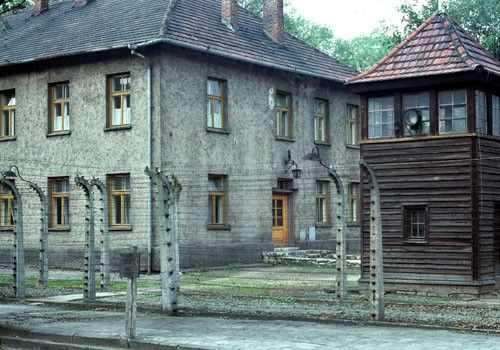U.S. provided a safe haven for Nazi war criminals: Report

The U.S. government has been secretly sheltering Nazi war criminals for several years and has clashed with other nations over their fate, a 600-page report, which the Department of Justice has tried to keep hidden from the public, reveals.
The report, which the Justice Department says is a product of six years of work but contains numerous factual errors and omissions, mentions that the Central Intelligence Agency (CIA) had provided a safe haven for Nazis after the World War II and has used them for postwar intelligence purposes.
According to the report obtained by The New York Times, the investigators of the Justice Department's Office of Special Investigations (OSI), which was created in 1979 to deport Nazis, have learned that some of the Nazis were indeed knowingly granted entry to the U.S., even though government officials were aware of their pasts.
America, which prided itself on being a safe haven for the persecuted, became - in some small measure - a safe haven for persecutors as well, The New York Times quoted the report as saying.
The report documents the successes and failures of OSI and how since its creation, it has deported, stripped of citizenship or blocked 300 Nazi war criminals from entering the U.S.
The report cites the names of numerous Nazi war criminals including Otto Von Bolschwing, an associate of Adolf Eichmann who had helped develop the initial plans to purge Germany of the Jews; Arthur L. Rudolph, a Nazi scientist who ran the Mittelwerk munitions factory and was actively involved in exploiting the slave laborers at Mittelwerk; and Tscherim Soobzokov, a former Waffen SS soldier.
While Bolschwing and Soobzokov collaborated with the CIA, Rudolph used his rocket-making expertise to help NASA build Saturn V rocket.
The report also includes passages on Dr. Josef Mengele, the so-called Angel of Death at Auschwitz. It details the OSI's elaborate efforts in the mid-1980s to hunt down Mengele and how it finally determined from a piece of scalp turned over by the Brazilian authorities that Mengele had fled to Brazil and had died there in about 1979 without ever entering the U.S.
The report also details that the Justice Department had found a smoking gun in 1997, establishing with definitive proof that Switzerland had bought gold from the Nazis that had been taken from Jewish victims of the Holocaust.
The report also discloses the failures of the OSI - for instance, how John Demjanjuk, a retired American autoworker, was mistakenly identified as the Treblinka concentration camp guard known as Ivan the Terrible, and how the U.S. officials, through a series of meetings held with Latvian officials, had attempted to pressurize the latter into pursuing suspected Nazis.
According to the report, the number of Nazis who made it into the U.S. was almost certainly much smaller than 10,000, a figure widely cited by U.S. government officials.
The report is the brainchild of Mark Richard, a senior Justice Department lawyer. In 1999, Richard had persuaded then Attorney General Janet Reno to begin a detailed look at what he saw as a critical piece of history, and he had assigned a career prosecutor, Judith Feigin, to the job. The final version of the report was edited in 2006 by Richard but he was stopped from making it public.
After Richard's death in 2009, David Sobel, a Washington lawyer, and the National Security Archive sued for the report's release under the Freedom of Information Act.
The Justice Department initially contested the lawsuit but finally handed to Sobel a partial copy of the report - with more than 1,000 passages and references deleted.
In March 2010, the OSI merged with the Domestic Security Section (DSS) of the Justice Department to form the Human Rights and Special Prosecutions Section (HRSP).
© Copyright IBTimes 2025. All rights reserved.





















